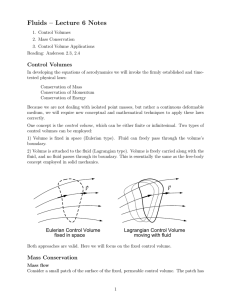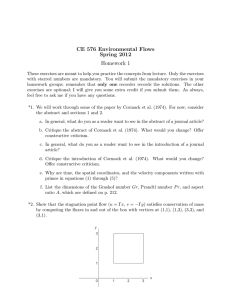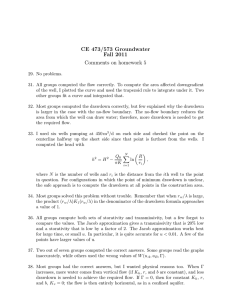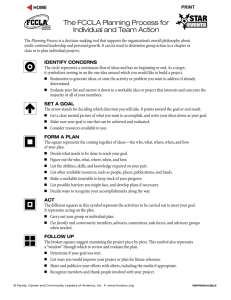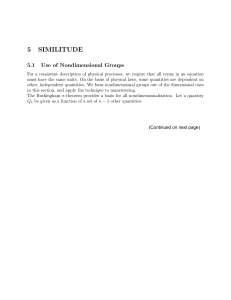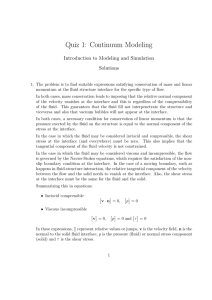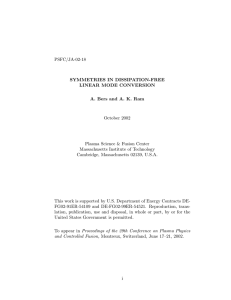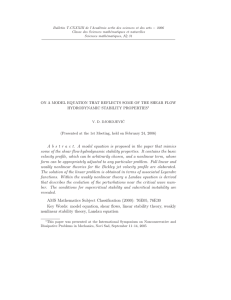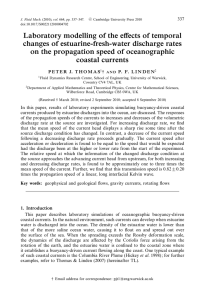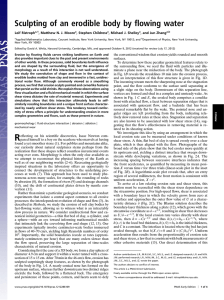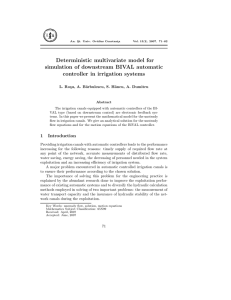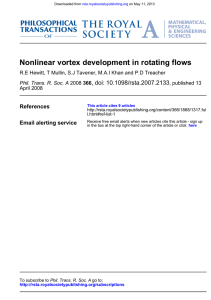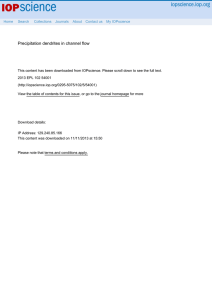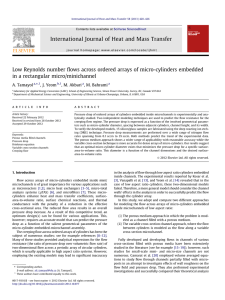CE 576 Environmental Flows Spring 2012 Homework 3
advertisement
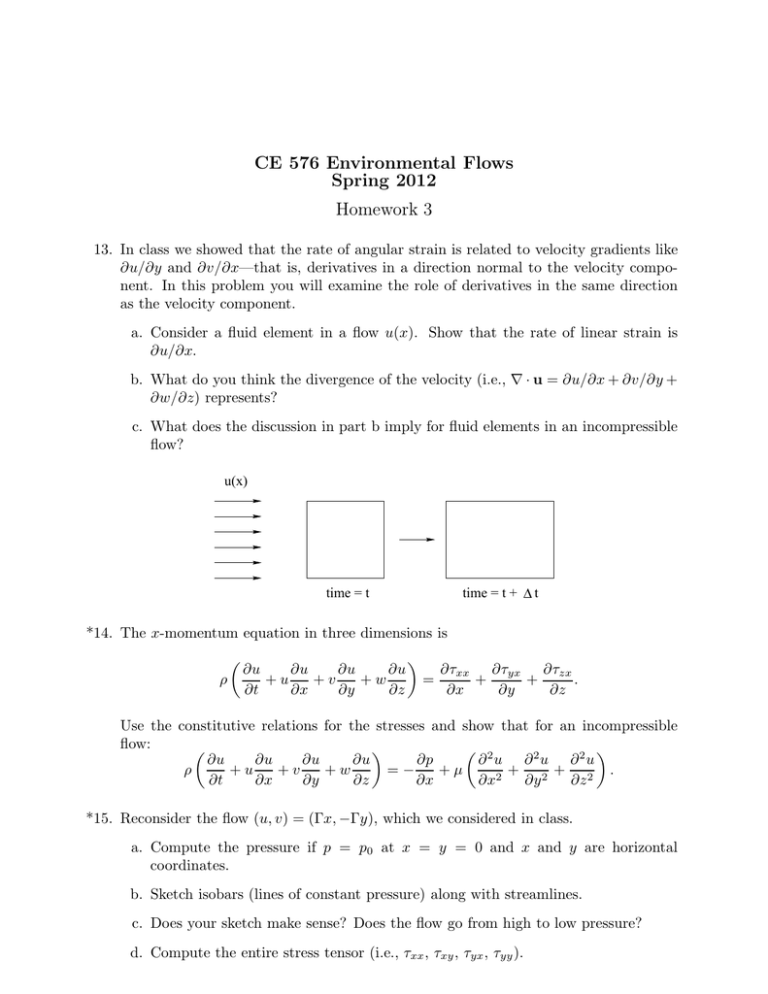
CE 576 Environmental Flows Spring 2012 Homework 3 13. In class we showed that the rate of angular strain is related to velocity gradients like ∂u/∂y and ∂v/∂x—that is, derivatives in a direction normal to the velocity component. In this problem you will examine the role of derivatives in the same direction as the velocity component. a. Consider a fluid element in a flow u(x). Show that the rate of linear strain is ∂u/∂x. b. What do you think the divergence of the velocity (i.e., ∇ · u = ∂u/∂x + ∂v/∂y + ∂w/∂z) represents? c. What does the discussion in part b imply for fluid elements in an incompressible flow? u(x) time = t + Δ t time = t *14. The x-momentum equation in three dimensions is ρ ∂u ∂u ∂u ∂u +u +v +w ∂t ∂x ∂y ∂z = ∂τyx ∂τzx ∂τxx + + . ∂x ∂y ∂z Use the constitutive relations for the stresses and show that for an incompressible flow: 2 ∂u ∂u ∂u ∂p ∂ u ∂ 2u ∂ 2u ∂u + 2 + 2 . +u +v +w =− +μ ρ ∂t ∂x ∂y ∂z ∂x ∂x2 ∂y ∂z *15. Reconsider the flow (u, v) = (Γx, −Γy), which we considered in class. a. Compute the pressure if p = p0 at x = y = 0 and x and y are horizontal coordinates. b. Sketch isobars (lines of constant pressure) along with streamlines. c. Does your sketch make sense? Does the flow go from high to low pressure? d. Compute the entire stress tensor (i.e., τxx , τxy , τyx , τyy ). 16. Suppose the viscous slot flow is started from rest. Let T be the time since the flow started. When can we consider the flow to be steady? That is, use scaling to derive a condition for the flow to be steady. 17. Watch the movie Low Reynolds Number Flows at the website below and answer the following: http://modular.mit.edu:8080/ramgen/ifluids/Low Reynolds Number Flow.rm (If that link does not work, try http://web.mit.edu/hml/ncfmf.html.) a. Explain the similarities between the flow around bull spermatazoa and the flow of glaciers. b. Explain hydrodynamic lubrication. c. Suppose a sphere of diameter 3 mm falls slowly in a viscous fluid. How much faster will it fall than a sphere (of the same material) of diameter 2 mm? d. Explain why waving a rigid rudder does not propel a body in highly viscous fluid. e. What was your favorite part of the movie? Why? *18. Consider steady, uniform, two-dimensional, incompressible, laminar flow down a solid, impermeable plane inclined at an angle α. a. Solve for the velocity u parallel to the plane. (Hint: Remember that the xdirection will have a component of gravity, and assume that the shear stress (e.g., from wind) is zero at the air-fluid interface at z = h.) b. Give at least two reasons why your expression for u is plausible. c. Show in two ways that the shear stress on the bottom is τ0 = ρgh sin α. d. Explain why the result in part c is valid for laminar and turbulent flow. α g h 1111111111111111111111111 0000000000000000000000000 τ0 0000000000000000000000000 1111111111111111111111111 0000000000000000000000000 1111111111111111111111111 z 0000000000000000000000000 1111111111111111111111111 0000000000000000000000000 1111111111111111111111111 0000000000000000000000000 1111111111111111111111111 0000000000000000000000000 1111111111111111111111111 0000000000000000000000000 1111111111111111111111111 0000000000000000000000000 1111111111111111111111111 0000000000000000000000000 1111111111111111111111111 x *19. We considered slow settling of a single spherical particle in a quiescent water body. However, that situation is likely to be rare in environmental flows. a. Find the paper Cuthbertson and Ervine (2007, J. Hydraulic Engineering). b. Use figure 5 to explain how well Stokes’s law describes settling in open channel flow. c. Critique the figure. Can you suggest ways to improve the presentation?



